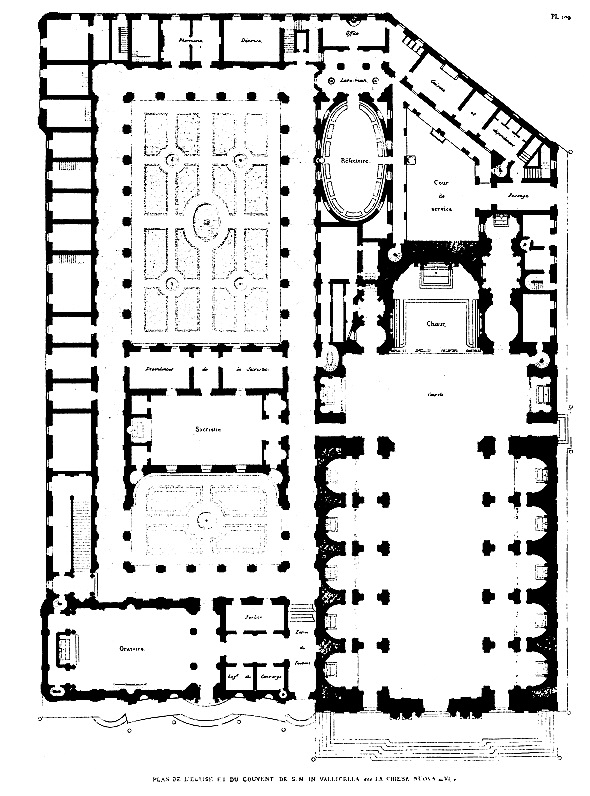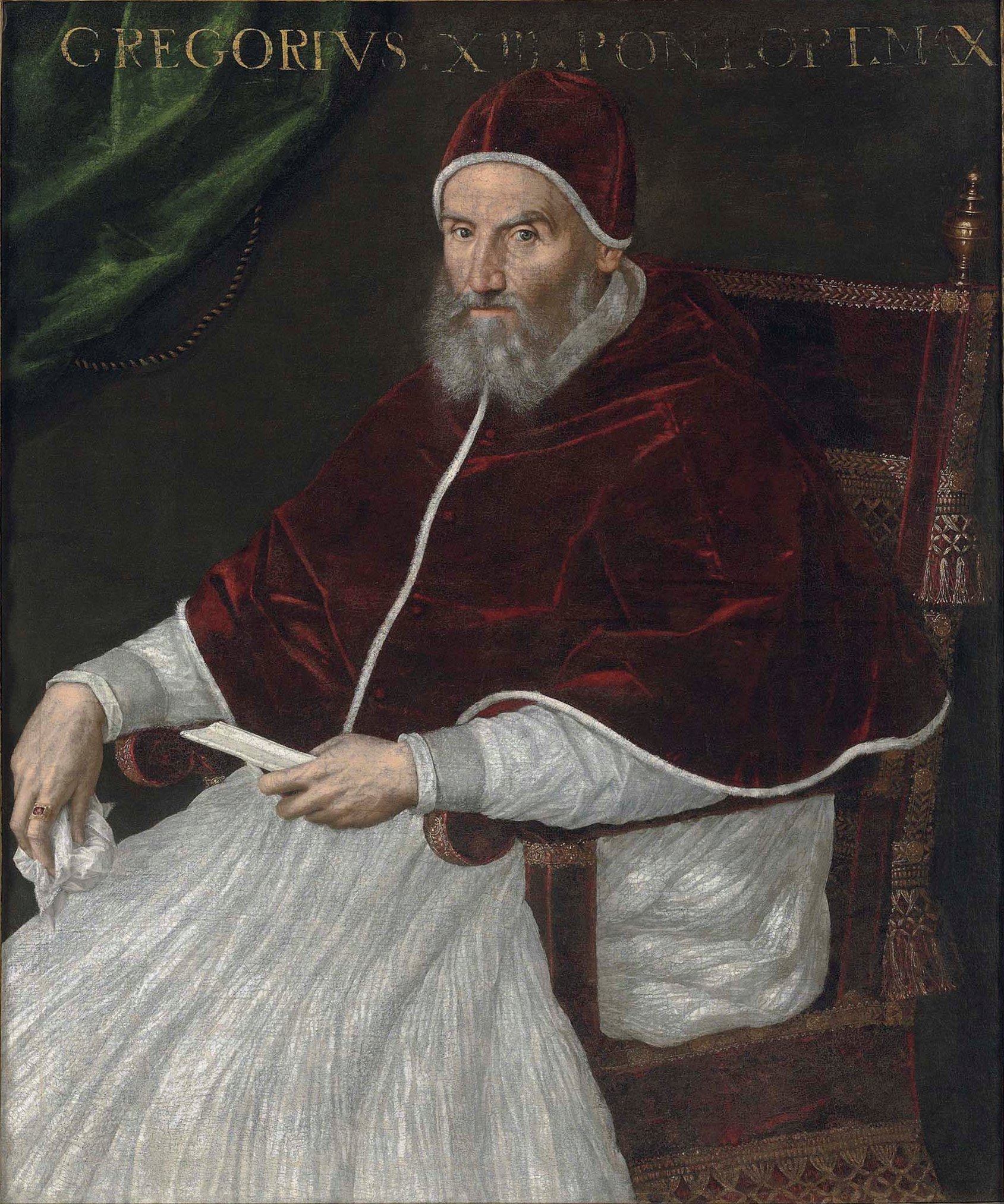|
Chiesa Nuova, Rome
Santa Maria in Vallicella, also called Chiesa Nuova, is a churches of Rome, church in Rome, Italy, which today faces onto the main thoroughfare of the Corso Vittorio Emanuele II, Rome, Corso Vittorio Emanuele and the corner of Via della Chiesa Nuova. It is the principal church of the Oratory of Saint Philip Neri, Oratorians, a religious congregation of secular priests, founded by St Philip Neri in 1561 at a time in the 16th century when the Counter Reformation saw the emergence of a number of new religious institutes such as the Jesuits, the Theatines, and the Barnabites. These new congregations were responsible for several great preaching churches built in the Centro Storico, the others being Sant'Andrea della Valle (Theatines), San Carlo ai Catinari (Barnabites), and Church of the Gesù, The Gesù and Sant'Ignazio, Rome, Sant'Ignazio (Jesuits). History By tradition, Pope Gregory I, St. Gregory the Great built the first church on the site. By the 12th century, it was dedicated to ... [...More Info...] [...Related Items...] OR: [Wikipedia] [Google] [Baidu] [Amazon] |
Rome
Rome (Italian language, Italian and , ) is the capital city and most populated (municipality) of Italy. It is also the administrative centre of the Lazio Regions of Italy, region and of the Metropolitan City of Rome. A special named with 2,746,984 residents in , Rome is the list of cities in the European Union by population within city limits, third most populous city in the European Union by population within city limits. The Metropolitan City of Rome Capital, with a population of 4,223,885 residents, is the most populous metropolitan cities of Italy, metropolitan city in Italy. Rome metropolitan area, Its metropolitan area is the third-most populous within Italy. Rome is located in the central-western portion of the Italian Peninsula, within Lazio (Latium), along the shores of the Tiber Valley. Vatican City (the smallest country in the world and headquarters of the worldwide Catholic Church under the governance of the Holy See) is an independent country inside the city boun ... [...More Info...] [...Related Items...] OR: [Wikipedia] [Google] [Baidu] [Amazon] |
Barnabites
The Barnabites (), officially named as the Clerics Regular of Saint Paul (), are a religious order of clerics regular founded in 1530 in the Catholic Church. They are associated with the Angelic Sisters of Saint Paul and the members of the Barnabite lay movement. Establishment of the Order Second in seniority of the orders of regular clerics (the Theatines being first), the Barnabites were founded in Milan, by Anthony Mary Zaccaria, Barthélemy Ferrari, and Jacopo Antonio Morigia. The region was then suffering severely from the wars between Charles V and Francis I, and Zaccaria saw the need for radical reform of the Church in Lombardy, afflicted by problems typical for that era: dioceses without a bishop, clergy with inadequate theological training, a decrease in religious practice, and monasteries and convents in decline. It was approved by Pope Clement VII in the brief ''Vota per quae vos'' on 18 February 1533. Later approvals gave it the status of a Religious Order, bu ... [...More Info...] [...Related Items...] OR: [Wikipedia] [Google] [Baidu] [Amazon] |
Santa Maria In Vallicella (Rome) - Intern
Santa Claus (also known as Saint Nicholas, Saint Nick, Father Christmas, Kris Kringle or Santa) is a legendary figure originating in Western Christian culture who is said to bring gifts during the late evening and overnight hours on Christmas Eve. Christmas elves are said to make the gifts in Santa's workshop, while flying reindeer pull his sleigh through the air. The popular conception of Santa Claus originates from folklore traditions surrounding the 4th-century Christian bishop Saint Nicholas, the patron saint of children. Saint Nicholas became renowned for his reported generosity and secret gift-giving. The image of Santa Claus shares similarities with the English figure of Father Christmas, and they are both now popularly regarded as the same person. Santa is generally depicted as a portly, jolly, white-bearded man, often with spectacles, wearing a red coat with white fur collar and cuffs, white-fur-cuffed red trousers, a red hat trimmed with white fur, a black leath ... [...More Info...] [...Related Items...] OR: [Wikipedia] [Google] [Baidu] [Amazon] |
Heraldry
Heraldry is a discipline relating to the design, display and study of armorial bearings (known as armory), as well as related disciplines, such as vexillology, together with the study of ceremony, Imperial, royal and noble ranks, rank and genealogy, pedigree. Armory, the best-known branch of heraldry, concerns the design and transmission of the Achievement (heraldry), heraldic achievement. The achievement, or armorial bearings usually includes a coat of arms on a escutcheon (heraldry), shield, helmet (heraldry), helmet and Crest (heraldry), crest, together with any accompanying devices, such as supporters, Heraldic badge, badges, Heraldic flag, heraldic banners and mottoes. Although the use of various devices to signify individuals and groups goes back to Ancient history, antiquity, both the form and use of such devices varied widely, as the concept of regular, hereditary designs, constituting the distinguishing feature of heraldry, did not develop until the High Middle Ages. It i ... [...More Info...] [...Related Items...] OR: [Wikipedia] [Google] [Baidu] [Amazon] |
Martino Longhi The Elder
Martino Longhi the Elder (1534–1591) was an Italian architect, the father of Onorio Longhi and the grandfather of Martino Longhi the Younger. He is also known as ''Martino Lunghi''. He was born in Viggiù into a family of architects, and initially worked in Germany for the Altemps family, who were relatives of the Milanese Borromeo. Later he was hired by Pope Pius IV to work, along with Giorgio Vasari and Jacopo Barozzi da Vignola to the church of Santa Croce in Bosco Marengo, the pope's hometown (1566–1572). Longhi moved to Rome in 1569. Here he worked to Palazzo Altemps, Palazzo Borghese (the court, possibly inspired to Pellegrino Tibaldi's modules) and designed the churches of Santa Maria della Consolazione, Palazzo Cesi-Armellini and San Girolamo degli Schiavoni. Also by Longhi is the tower of Palazzo Senatorio, in the Capitol Hill, which he modified from the original Michelangelo Michelangelo di Lodovico Buonarroti Simoni (6March 147518February 1564), known mon ... [...More Info...] [...Related Items...] OR: [Wikipedia] [Google] [Baidu] [Amazon] |
Bishop Of Todi
The Italian Catholic diocese of Todi existed until 1986, when it was united into the diocese of Orvieto-Todi."Diocese of Todi" ''''. David M. Cheney. Retrieved February 29, 2016"Diocese of Todi" ''GCatholic.org''. Gabriel Chow. Retrieved February 29, 2016 Up until that point, the diocese had always been directly dependent on the . History During the[...More Info...] [...Related Items...] OR: [Wikipedia] [Google] [Baidu] [Amazon] |
Pope Gregory XIII
Pope Gregory XIII (, , born Ugo Boncompagni; 7 January 1502 – 10 April 1585) was head of the Catholic Church and ruler of the Papal States from 13 May 1572 to his death in April 1585. He is best known for commissioning and being the namesake for the Gregorian calendar, which remains the internationally accepted civil calendar to this day. Early biography Youth Ugo Boncompagni was born the son of Cristoforo Boncompagni (10 July 1470 – 1546) and Angela Marescalchi, and paternal grandson of Giacomo Boncompagni and Camilla Piattesi, in Bologna, where he studied law and graduated in 1530. He later taught jurisprudence for some years, and his students included notable figures such as Cardinals Alexander Farnese, Reginald Pole and Charles Borromeo. He had an illegitimate son after an affair with Maddalena Fulchini, Giacomo Boncompagni, but before he took holy orders, making him the last Pope to have left issue. Career before papacy At the age of 36 he was summoned to Rome ... [...More Info...] [...Related Items...] OR: [Wikipedia] [Google] [Baidu] [Amazon] |
Convent
A convent is an enclosed community of monks, nuns, friars or religious sisters. Alternatively, ''convent'' means the building used by the community. The term is particularly used in the Catholic Church, Lutheran churches, and the Anglican Communion. Etymology and usage The term ''convent'' derives via Old French from Latin ''conventus'', perfect participle of the verb ''convenio'', meaning "to convene, to come together". It was first used in this sense when the eremitical life began to be combined with the cenobitical. The original reference was to the gathering of mendicants who spent much of their time travelling. Technically, a monastery is a secluded community of monastics, whereas a friary or convent is a community of mendicants (which, by contrast, might be located in a city), and a canonry is a community of canons regular. The terms abbey and priory can be applied to both monasteries and canonries; an abbey is headed by an abbot, and a priory is a lesser depend ... [...More Info...] [...Related Items...] OR: [Wikipedia] [Google] [Baidu] [Amazon] |
Sant'Ignazio, Rome
The Church of St. Ignatius of Loyola at Campus Martius (, ) is a Latin Catholic titular church, of deaconry rank, dedicated to Ignatius of Loyola, the founder of the Society of Jesus, located in Rome, Italy. Built in Baroque style between 1626 and 1650, the church functioned originally as the chapel of the adjacent Roman College, which moved in 1584 to a new larger building and was renamed the Pontifical Gregorian University. It is one of the great 17th century preaching churches built by Counter-Reformation orders in the Centro Storico (the others being The Gesù, also of the Jesuits, San Carlo ai Catinari of the Barnabites, Sant'Andrea della Valle of the Theatines, and the Chiesa Nuova of the Oratorians). History The opened very humbly in 1551, with an inscription over the door summing up its simple purpose: "''School of Grammar, Humanity, and Christian Doctrine. Free''". Plagued by financial problems in the early years, the had various provisional centres. In 1560, Vittor ... [...More Info...] [...Related Items...] OR: [Wikipedia] [Google] [Baidu] [Amazon] |
Church Of The Gesù
The Church of the Gesù (, ), officially named (), is a church located at Piazza del Gesù in the Pigna (rione of Rome), Pigna ''Rioni of Rome, rione'' of Rome, Italy. It is the mother church of the Society of Jesus (best known as Jesuits). With its façade, described as "the first truly Baroque architecture, baroque façade", the church served as a model for innumerable Jesuit churches all over the world, especially in Central Europe and in Portuguese Empire, Portuguese colonies. Its paintings in the nave, Crossing (architecture), crossing, and Side chapel, side chapels became models for art in Jesuit churches throughout Italy and Europe, as well as those of other orders. The Church of the Gesù is one of the great 17th-century preaching churches built by Counter-Reformation orders like the Jesuits in the Centro Storico of Romethe others being Sant'Ignazio, Rome, Sant'Ignazio, also of the Jesuits, San Carlo ai Catinari of the Barnabites, Sant'Andrea della Valle of the Theatines ... [...More Info...] [...Related Items...] OR: [Wikipedia] [Google] [Baidu] [Amazon] |




